The birth of the Soviet missile defense system. Yuditsky builds a supercomputer
Next in stories two people appear, who are called the fathers of Russian modular arithmetic, however, everything is not easy here. As a rule, there were two unspoken traditions for Soviet developments.
Usually, if several people took part in the work and one of them was a Jew, his contribution was not always remembered and not everywhere (remember how they drove Lebedev's group and wrote denunciations against him because he dared to take Rabinovich, not the only case, by the way, we will mention the traditions of Soviet academic anti-Semitism).
The second - most of the laurels went to the boss, and they tried not to mention the subordinates in general, even if their contribution was decisive (this is one of the core traditions of our science, there are often cases when the name of the real project designer, inventor and researcher was in the list of co-authors in place of the third after the crowd of all his bosses, and in the case of Torgashev and his computers, which we will talk about later, in general - on the fourth).
Akushsky
In this case, both were violated - in most of the popular sources, literally until recent years, Israel Yakovlevich Akushsky was called the main (or even the only) father of modular machines, a senior researcher in the laboratory of modular machines in SKB-245, where Lukin sent a task on designing such a computer.
For example, here is a phenomenal article in the magazine about innovation in Russia "Stimul" under the heading "Historical Calendar":
Well, further in the same vein.
He solved the unsolved problems since the time of Fermat and raised the domestic computer industry from his knees:
“I would make a high-performance computer differently, but not everyone needs to work the same way. May God give you success! "
... A number of technical solutions of Akushsky and his colleagues were patented in Great Britain, the USA, and Japan. When Akushsky was already working in Zelenograd, a company was found in the USA that was ready to cooperate in creating a machine “stuffed” with Akushsky's ideas and the latest US electronic base. Preliminary negotiations were already underway. Kamil Akhmetovich Valiev, director of the Research Institute of Molecular Electronics, was preparing to launch work with the latest microcircuits from the United States, when Akushsky was suddenly summoned to the "competent authorities", where, without any explanation, they said that "the scientific center of Zelenograd will not increase the intellectual potential of the West!"
The article, in general, is remarkable in that it is a reproduction of a note by the notorious BM Malashevich "Modular arithmetic and modular computers", including very odious passages, for example:
They are about his work with IBM tabulators, well, at least, they did not invent this system. It would seem, what, in fact, is the problem? Akushsky is everywhere called an outstanding mathematician, professor, doctor of sciences, member correspondent, all the awards with him? However, his official biography and bibliography are in stark contrast to the laudatory eulogies.
In his autobiography, Akushsky writes:
Questions immediately arise, and why he was not accepted (and why he tried only once, in his family, unlike Kisunko, Rameev, Matyukhin - vigilant authorities did not find enemies of the people), and why did he not defend his university degree as an external student?
In those days, this was practiced, but Israel Yakovlevich modestly keeps silent about this, he tried not to advertise the lack of higher education. In his personal file, preserved in the archive at the place of his last work, in the column "education" his hand says "higher, obtained by self-education" (!). In general, this is not scary for science, not all the outstanding computer scientists in the world have graduated from Cambridge, but let's see what success he has achieved in the field of computer development.
He began his career in 1931, until 1934 working as a calculator at the Research Institute of Mathematics and Mechanics of Moscow State University, in fact, he was just a human calculator, day and night multiplying columns of numbers on an adding machine and writing down the result. Then he was promoted to journalism and from 1934 to 1937 the Akush editor (not the author!) Of the mathematics section of the State Publishing House of Technical and Theoretical Literature, was engaged in editing manuscripts for typos.
From 1937 to 1948 I. Ya. Akushsky - junior, and then senior researcher of the Department of Approximate Calculations of the Mathematical Institute. V.S.Steklov of the USSR Academy of Sciences. What was he doing there, inventing new mathematical methods or computers? No, he led a group that calculated firing tables for artillery guns, navigation tables for military aviation, tables for radar systems of the Navy, etc., actually became the head of calculators. In 1945 he managed to defend his Ph.D. thesis on the problem of the use of tabulators. At the same time, two brochures were published, where he was a co-author, here are all his early works in mathematics:
How to simplify calculations (L. Ya. Neishuler, I. Ya. Akushsky. - Moscow; Leningrad: Publishing house of the Academy of Sciences of the USSR, 1938, Popular science series "Academy of Sciences - to the Stakhanovites")
и
Tables of Bessel functions (L. A. Lyusternik, I. Ya. Akushsky, V. A. Ditkin. - Moscow; Leningrad: Gostekhizdat, 1949 (Mathematical tables; Issue 1).
One book, co-authored with Neishuler, is a popular brochure for the Stakhanovites, how to count on an adding machine; the second, co-authored with his boss, is generally tables of functions. As you can see, there have been no breakthroughs in science yet (later, however, also, one book together with Yuditsky about SOK, and even a couple of brochures about punchers and programming on the "Elektronika-100" calculator).
In 1948, during the formation of the ITMiVT of the USSR Academy of Sciences, the department of L.A. Lyusternik was transferred to it, including I. Ya. Akushsky, from 1948 to 1950 he was a senior researcher, and then. about. head laboratory of the same calculators. In 1951-1953, for some time, a sharp turn in his career and he was suddenly the chief engineer of the project of the State Institute "Stalproekt" of the Ministry of Ferrous Metallurgy of the USSR, which was engaged in the construction of blast furnaces and other heavy equipment. What scientific research in the field of metallurgy he carried out there, the author, unfortunately, did not manage to find out.
Finally, in 1953, he found an almost perfect job. President of the Academy of Sciences of the Kazakh SSR I. Satpayev, with the aim of developing computational mathematics in Kazakhstan, decided to form a separate laboratory of machine and computational mathematics under the Presidium of the Academy of Sciences of the Kazakh SSR. Akushsky was invited to lead it. In the position of head. laboratory, he worked in Alma-Ata from 1953 to 1956, then returned to Moscow, but continuing for some time to manage the laboratory part-time, part-time remotely, which caused the expected indignation of Almaty residents (a person lives in Moscow and receives a salary for a position in Kazakhstan), which was reported even in local newspapers. The newspapers, however, were told that the party knew better, after which the scandal was hushed up.
With such an impressive scientific career, he ended up in the same SKB-245 as a senior researcher in the laboratory of D.I. Yuditsky, another participant in the development of modular machines.
Yuditsky
Let's talk now about this person, who was often considered the second, and even more often - they simply forgot to somehow separately mention. The fate of the Yuditsky family was not easy. His father, Ivan Yuditsky, was a Pole (which in itself was somehow not very good in the USSR), in the course of his adventures in the Civil War in the vastness of our homeland, he met the Tatar Maryam-Khanum and fell in love to the point of accepting Islam, turning from Pole in Kazan Tatar Islam-Girey Yuditsky.
As a result, his son was blessed by his parents with the name Davlet-Girey Islam-Gireyevich Yuditsky (!), And his nationality in the passport was entered as “Kumyk”, with his parents “Tatar” and “Dagestan” (!). The joy that he experienced all his life from this, as well as the problems with acceptance in society, is rather difficult to imagine.
Father, however, was less fortunate. His Polish origin played a fatal role at the beginning of World War II, when the USSR occupied part of Poland. As a Pole, although for many years he had become a "Kazan Tatar" and a citizen of the USSR, despite his heroic participation in the Civil War in the Budenov army, he was exiled (alone, without a family) to Karabakh. Serious wounds of the Civil War and difficult living conditions affected: he became seriously ill. At the end of the war, my daughter went to Karabakh for him and brought him to Baku. But the road was difficult (mountainous terrain in 1946, I had to go by horse-drawn and automobile transport, often by accident), and my health was seriously undermined. At the railway station in Baku, before reaching home, Islam-Girey Yuditsky died, joining the pantheon of repressed fathers of Soviet designers (this has really become almost a tradition).
Unlike Akushsky, Yuditsky showed himself to be a talented mathematician from his youth. Despite the fate of his father, after graduating from school, he was able to enter the Azerbaijan State University in Baku and during his studies officially worked as a physics teacher in an evening school. He not only received a full-fledged higher education, but in 1951, after graduating from the university, he won a prize at a diploma competition in the Azerbaijan Academy of Sciences. So Davlet-Girey received an award and was invited to the postgraduate course of the Academy of Sciences of the AzSSR.
Then a lucky chance intervened in his life - a representative from Moscow came and selected the five best graduates to work in the Special Design Bureau (the same SKB-245), where the design of Strela had just begun (before Strela, however, he or not admitted, or his participation is not documented anywhere, however, he was one of the designers of "Ural-1").
It should be noted that his passport even then caused Yuditsky significant inconveniences, up to the fact that on a business trip to one of the secure facilities the abundance of non-Russian "Gireys" aroused suspicion among the guards and they did not let him pass for several hours. Returning from a business trip, Yuditsky immediately went to the registry office to fix the problem. His own Giray was removed from him, and his patronymic was categorically denied.
Of course, the fact that for many years Yuditsky was forgotten and almost erased from the history of domestic computers is not only to blame for his dubious origin. The fact is that in 1976 the research center, which he headed, was destroyed, all its developments were closed, employees were dispersed, and they tried to simply remove him from the history of computers.
Since history is written by the winners, everyone has forgotten about Yuditsky, except for the veterans of his team. Only in recent years has this situation begun to improve, however, except on specialized resources on the history of the Soviet military equipment, it is problematic to find information about him, and the general public knows him much worse than Lebedev, Burtsev, Glushkov and other Soviet pioneers. Therefore, in the descriptions of modular machines, his name often came second, if at all. Why it happened and how he deserved it (spoiler: in a classic way for the USSR - causing personal hostility with his intellect among limited brains, but omnipotent party bureaucrats), we will consider below.
K340A series
In 1960, at the Lukinsky NIIDAR (aka NII-37 GKRE) at this time there were serious problems. The missile defense system desperately needed computers, but no one was able to develop computers in their native walls. The A340A machine was made (not to be confused with later modular machines with the same numeric index, but different prefixes), but it was not possible to get it to work, due to the phenomenal curvature of the motherboard architect's arms and the terrible quality of the components. Lukin quickly realized that the problem was in the approach to design and in the leadership of the department, and began looking for a new leader. His son, V.F. Lukin recalls:
So Yuditsky became the head of the computer development department at NIIDAR, and I. Ya. Akushsky became the head of the laboratory in this department. He cheerfully began to rework the architecture of the machine, his predecessor implemented everything on huge boards of several hundred transistors, which, given the disgusting quality of these transistors, did not allow accurately localizing circuit faults. The scale of the disaster, as well as all the genius of that eccentric who built architecture in this way, is reflected in the quote of the student of MPEI in practice at NIIDAR A.A.Popov:
As a result, two years later, the A340A, a 20-bit computer with a speed of 5 kIPS for the Danube-2 radar, was still able to debug and release (however, soon the Danube-2 was replaced by the Danube-3 on modular machines, although and became famous for the fact that it was this station that participated in the world's first interception of ICBMs).
While Yuditsky overcame rebellious boards, Akushsky studied Czech articles on the design of SOK machines, which the head of the SKB-245 department, E.A. Gluzberg, received from the Abstract Journal of the USSR Academy of Sciences a year earlier. Initially, Gluzberg's task was to write an abstract for these articles, but they were in Czech, which he did not know, and in an area that he did not understand, so he kicked them off to Akushsky, however, he did not know Czech either, and the articles went further to V. S. Linsky. Linsky bought a Czech-Russian dictionary and mastered the translation, but came to the conclusion that it is inexpedient to use RNS in most computers due to the low efficiency of floating point operations in this system (which is quite logical, since mathematically this system is designed only for working with natural numbers , everything else is done through horrific crutches).
As Malashevich writes:
As V.M. Amerbaev notes:
Translating from the language of computer science into Russian - in order to work with SOK, one had to be an intelligent mathematician. Fortunately, there was already an intelligent mathematician there, and Lukin (for whom, as we remember, the construction of a supercomputer for Project "A" was a matter of life and death) involved Yuditsky in the case. Tom really liked the idea, especially since it allowed him to achieve unprecedented performance.
From 1960 to 1963, a prototype of his development was completed, called the T340A (the production car received the K340A index, but did not fundamentally differ). The machine was built on 80 thousand 1T380B transistors, had a ferrite memory. From 1963 to 1973, serial production was carried out (in total, about 50 copies were delivered for radar systems).
They were used in the Danube of the first A-35 missile defense system and even in the famous project of the monstrous over-the-horizon Duga radar. At the same time, the MTBF was not that great - 50 hours, which shows the level of our semiconductor technology very well. Replacing faulty units and rebuilding took about half an hour, the car consisted of 20 cabinets in three rows. The numbers 2, 5, 13, 17, 19, 23, 29, 31, 61, 63 were used as bases. Thus, theoretically, the maximum number with which operations could be performed was of the order of 3.33 ∙ 10 ^ 12. In practice, it was less, due to the fact that some of the bases were intended for control and error correction. To control the radar, complexes of 5 or 10 vehicles were required, depending on the type of station.
The K340A processor consisted of a data processing device (that is, an ALU), a control device and two types of memory, each 45-bit wide - a 16-word buffer storage (something like a cache) and 4 command storage units (actually a ROM with firmware, capacity 4096 words, implemented on cylindrical ferrite cores, to write the firmware, each of 4 thousand of 45-bit words had to be entered manually by inserting the core into the hole in the coil and so on for each of the 4 blocks). The RAM consisted of 16 drives of numbers, 1024 words each (90 KB in total) and a constant drive of 4096 words (possibly increasing to 8192 words). The car was built according to the Harvard scheme, with independent command and data channels and consumed 33 kW of electricity.
Note that the Harvard scheme was used for the first time among the machines of the USSR. The RAM was two-channel (also an extremely advanced scheme for those times), each number accumulator had two ports for input-output of information: with subscribers (with the possibility of parallel exchange with any number of blocks) and with a processor. In a very ignorant article by Ukrainian copywriters from UA-Hosting Company on Habré, it was said about it like this:
This shows that most people do not even distinguish between the concepts of the system bus architecture and the architecture of the instruction set. It's funny that the Reduced Instruction Set Computer - RISC, copywriters seem to be mistaken for a military structure at particular RISK. How Harvard architecture excludes the emergence of viruses (especially in the 1960s) history is also silent, not to mention the fact that the concepts of CISC / RISC in their pure form are applicable only to a limited number of processors of the 1980s and early 1990s, and in no way not to ancient machines.
Returning to the K340A, we note that the fate of the machines of this series was rather sad and repeats the fate of the developments of the Kisunko group. Let's run a little ahead. The A-35M system (a complex from the "Danube" with K430A) was put into service in 1977 (when the capabilities of the 2nd generation Yuditsky machines were already hopelessly and incredibly lagging behind the requirements).
He was not allowed to develop a more progressive system for a new missile defense system (and this will be discussed in more detail later), Kisunko was finally kicked out of all missile defense projects, Kartsev and Yuditsky died of heart attacks, and the struggle of the ministries ended with the pushing of a fundamentally new A-135 system already with the necessary and " correct ”developers. The system included a new monstrous radar 5N20 "Don-2N" and already "Elbrus-2" as a computer. All this is a separate story, which will be covered further.
The A-35 system practically did not have time to work out somehow. It was relevant in the 1960s, but was adopted with a delay of 10 years. She had 2 stations "Danube-3M" and "Danube-3U", and a fire broke out on 3M in 1989, the station was practically destroyed and abandoned, and the A-35M system de facto ceased functioning, although the radar worked, creating the illusion of a combat-ready complex. In 1995, the A-35M was finally decommissioned. In 2000, "Danube-3U" was completely shut down, after which the complex was guarded, but abandoned until 2013, when the dismantling of antennas and equipment began, and various stalkers climbed into it even before that.
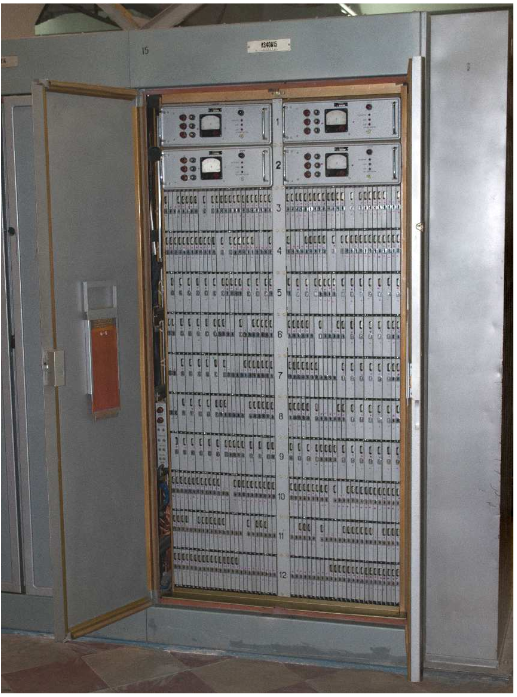
Boris Malashevich legally visited the radar station in 2010, he was given an excursion (and his article was written as if the complex was still working). His photographs of Yuditsky's cars are unique, alas, there are no other sources. What happened to the cars after his visit is unknown, but, most likely, they were sent to scrap metal during the dismantling of the station.
Here is a view of the station from the casual side a year before his visit.


Here is the state of the station from the other side (Lana sator):
Well, and finally, one of the most burning questions - what was the performance of this monster?
All sources indicate a monstrous figure of about 1,2 million double operations per second (this is a separate trick, the K430A processor technically performed one command per cycle, but in each command there were two operations in a block), as a result, the total performance was about 2,3 million commands ... The command system contains a complete set of arithmetic, logical and control operations with a developed display system. The AU and UU commands are three-address, the memory access commands are two-address. The execution time of short operations (arithmetic, including multiplication, which was the main breakthrough in architecture, logical, shift operations, index arithmetic operations, control transfer operations) is one cycle.
Comparing the computing power of 1960s machines head-on is a dreadful and thankless task. There were no standard tests, the architectures were just monstrously different, the instruction systems, the base of the number system, the supported operations, the length of the machine word - everything was unique. As a result, in most cases it is generally not clear how to count and what is cooler. Nevertheless, we will give some guidelines, trying to translate "operations per second" unique for each machine into more or less traditional "additions per second".

So, we see that the K340A in 1963 was not the fastest computer on the planet (although it was the second after the CDC 6600). However, he showed truly outstanding performance, worthy of being recorded in the annals of history. There was only one problem and a fundamental one. Unlike all the Western systems listed here, which were precisely full-fledged universal machines for scientific and business applications, the K340A was a specialized computer. As we have already said, the RNC is simply ideal for addition and multiplication operations (only natural numbers and), when using it, you can get super-linear acceleration, which explains the monstrous performance of the K340A, comparable to tens of times more complex, advanced and expensive CDC6600.
However, the main problem of modular arithmetic is the existence of non-modular operations, more precisely, the main one is comparison. The RNS algebra is not an algebra with a one-to-one order, so it is impossible to compare numbers directly in it, this operation is simply not defined. Division of numbers is based on comparisons. Naturally, not every program can be written without using comparisons and division, and our computer either becomes not universal, or we spend enormous resources on converting numbers from one system to another.
As a result, the K340A definitely had an architecture close to genius, which made it possible to get performance out of a poor element base at the level of many times more complex, huge, advanced and insanely expensive CDC6600. For this I had to pay, in fact, for what this computer became famous for - the need to use modular arithmetic, which perfectly suited a narrow range of tasks and did not fit well for everything else.
In any case, this computer has become the most powerful second-generation machine in the world and the most powerful among uniprocessor systems of the 60s, naturally, taking into account these limitations. Let us emphasize again that a direct comparison of the performance of SOC computers and traditional universal vector and superscalar processors cannot be correctly carried out in principle.
Because of the fundamental limitations of the RNS, it is even easier for such machines than for vector computers (like M-10 Kartsev or Seymour Cray's Cray-1) to find a problem where calculations will be performed orders of magnitude slower than in conventional computers. Despite this, from the point of view of its role, the K340A was, of course, a completely ingenious design, and in its subject area it was many times superior to similar Western developments.
The Russians, as always, took a special path and, due to amazing technical and mathematical tricks, they were able to overcome the lag in the element base and the lack of its quality, and the result was very, very impressive.
However, unfortunately, breakthrough projects of this level in the USSR usually awaited oblivion.
And so it happened, the K340A series remained the only and unique. We will tell you how and why this happened later.
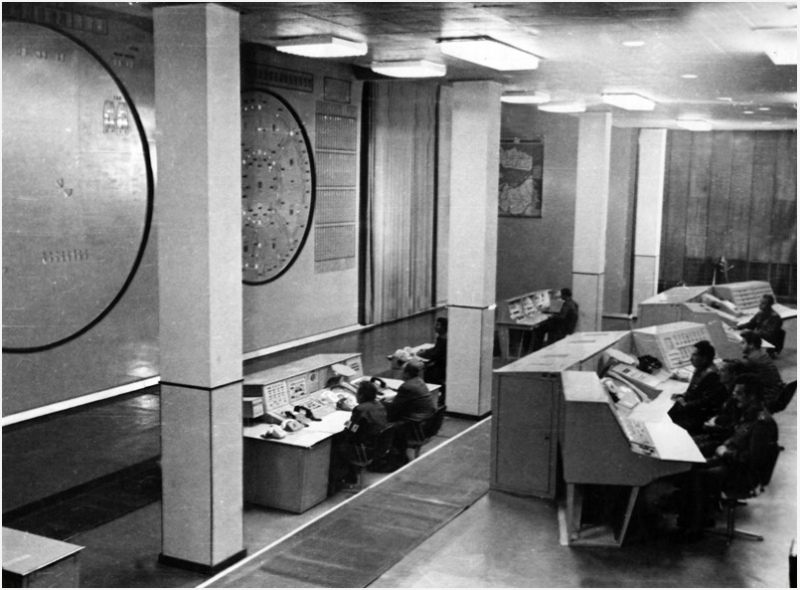
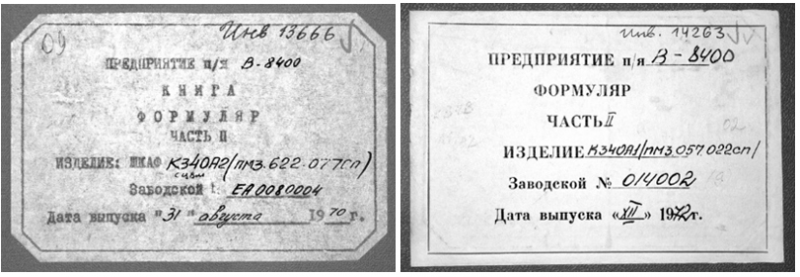
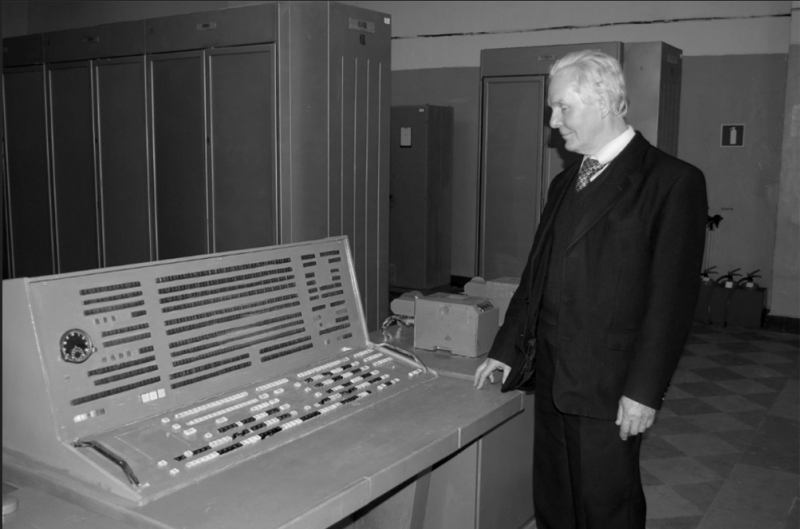
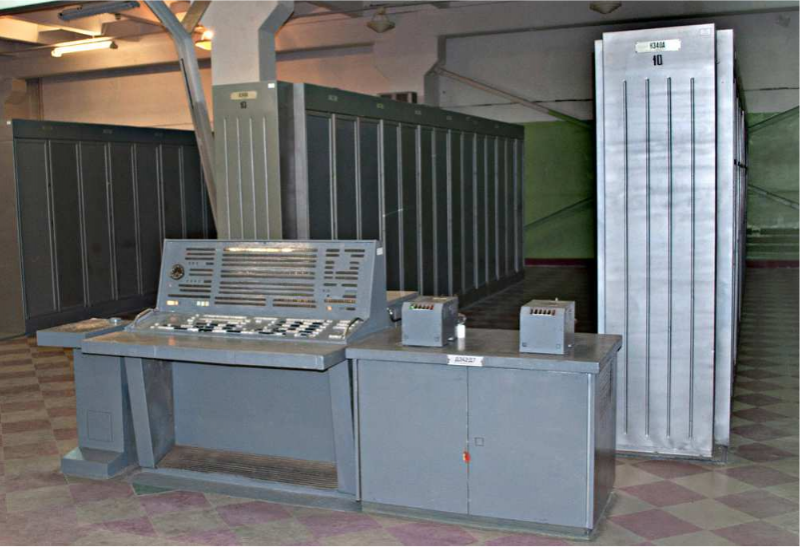
Information